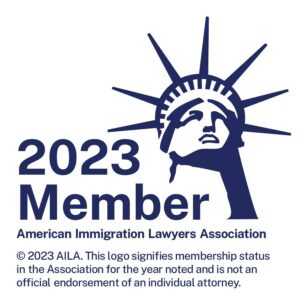Have you ever heard horror stories about families fighting over Grandma’s jewelry or getting stuck in a never-ending legal battle after someone passes away? Or how long it can take to sell a house tied up in the court process? What about family members being denied their inheritance completely? Unfortunately, these situations happen every day. Not even the rich and famous are immune! A simple Google search will pull up dozens of celebrity stories about all the conflicts after they die.
But most people don’t realize these things are avoidable – if you understand the process. So, if you’ve thought about creating a will or trust to avoid these outcomes, let’s ensure you’re fully aware of what’s at stake first. We’ll use a food analogy throughout this article, so our apologies if we make you hungry.
Lasagna as an Example of the Difference Between a Will or Trust and an Estate Plan
Let’s start by getting clear on what we’re talking about. You’ve probably heard “estate planning” numerous times, but do you know what it is? Unlike what you may have heard or read about, estate planning and the documents involved – such as a will or trust – differ.
Think of your favorite recipe. We’ll use lasagna as an example. A lasagna recipe includes a few different components: the ingredients needed to make the dish, how much of each ingredient you need, and the steps you have to take to transform the ingredients into a dish. Without the steps, the ingredients are just ingredients—they don’t create anything.
Estate planning is similar. Your estate plan is the recipe, and the documents are the ingredients. A will or trust may be the pasta or the sauce, but they are not the lasagna. Sure, they’re necessary components of the lasagna, but without the other ingredients and steps, they’re just pasta and sauce. Same with estate planning. If you just create a will or trust, you have just documents. They don’t do anything by themselves.
That most people think the documents ARE the estate plan is a common misconception based on a lack of knowledge. Too many people are focused on the documents, even many lawyers, and so think all they need to do is create those documents, sign them, and call it a day. Even so-called financial “experts” will tell you this. And there’s a new tech industry based on this premise, with do-it-yourself programs like LegalZoom. AI has even joined the fold.
All these people and companies are talking about the documents or ingredients. They are not telling you about the recipe. They are not showing you how to make the lasagna, but rather, they’re telling you about some (not even all) of the ingredients you need. The results are the following: families in court and conflict, fights over necessary ingredients, long wait times to sell a house or distribute any of the assets, and even big, unnecessary tax bills.
To truly protect your loved ones and ensure your wishes are carried out the way you want, as easily as possible, for the people you love, you need a comprehensive estate plan. This plan should lay out not only the ingredients you need but also in what amounts and what actions must be taken to make the lasagna.
If you haven’t created a comprehensive plan or your current plan fails for any reason, know that there’s a plan already made for you. It’s a plan in your State’s law and may differ significantly from what you want.
Your State’s Recipe for Lasagna May Be Gross
Let’s return to our lasagna example to illustrate the difference between the State’s plan for you and one you can create for yourself.
Let’s say the State’s recipe for lasagna includes spicy sausage, but you can’t tolerate spicy foods. The state’s plan may contain meat, but you’re a vegetarian. Or, it could be that the State’s recipe includes mushrooms, but your child is allergic to mushrooms. Some ingredients may be missing altogether, and the recipe will probably tell you that you can’t cook the lasagna for months or years (goodness, your family will be hungry!). Whatever the situation, the State’s plan may include some components you don’t like or even one that could be disastrous to your family.
In reality, your State’s plan says how your assets will be distributed, who will get them, and in what amounts. It requires a court process, which can be lengthy and expensive, and sometimes assets are frozen until the court process is over. It’s also set up for conflict, as your family members – even if you’re estranged – must get notice of the court proceeding, what assets you have, and are invited to make a claim for your assets. You may not like any of this.
If not, here’s the good news. The law also says you can create your plan and decide on who you want to inherit your assets and how. If you create your plan, you get to choose to give money to charitable causes that matter to you, which the State’s plan does not allow for. And if you create your plan, you can also decide whether you want your loved ones to go through the court process. Yes, the court process can be optional.
What Recipe Do You Want to Use?
By creating your estate plan, you get to choose your lasagna recipe. You can decide whether you want meat, veggies, or mild or spicy sausage. You get to exclude ingredients your family members may be allergic to. You even decide if you want to share your lasagna with someone else. And you get to decide when to cook the lasagna, whether you want it to be eaten tonight or assembled, frozen, and saved for another day.
It’s entirely possible that you don’t think the State’s recipe is gross, and you wouldn’t change a thing. But you won’t know that until you know the details of the State’s plan and how those details pertain to you, your assets, and your family. Or, it could be that you think the State’s recipe is entirely gross, and you want to pick one you and your family like. Either way, know what you want to create, be clear on how to do it, and do it correctly. Luckily, we can help.
How We Help You Get it Right
We’ve seen too many families suffer negative, yet unnecessary, consequences after a loved one dies. And if you haven’t experienced it yourself, you probably will. However, with proper education, beginning with correcting the misconception that estate planning and the document are the same, we believe we can break the cycle of strife.
We start with education so you are clear on what the State’s plan is for you and what you can do to create your own plan that aligns with your values, goals, and family, and most importantly, that it works when you need it to.
We call it Life & Legacy Planning. Once you’ve created your Life & Legacy Plan, you can rest easy knowing your wishes will be honored, your loved ones cared for, and your property protected. Book a call with us today to learn more.
Contact us today to get started.
This article is a service of Oak Tree Law Firm, a Personal Family Lawyer® Firm. We don’t just draft documents; we ensure you make informed and empowered decisions about life and death, for yourself and the people you love. That’s why we offer a Life & Legacy Planning™ Session, during which you will get more financially organized than you’ve ever been before and make all the best choices for the people you love.
The content is sourced from Personal Family Lawyer® for use by Personal Family Lawyer® firms, a source believed to be providing accurate information. This material was created for educational and informational purposes only and is not intended as ERISA, tax, legal, or investment advice. If you are seeking legal advice specific to your needs, such advice services must be obtained on your own separate from this educational material.







